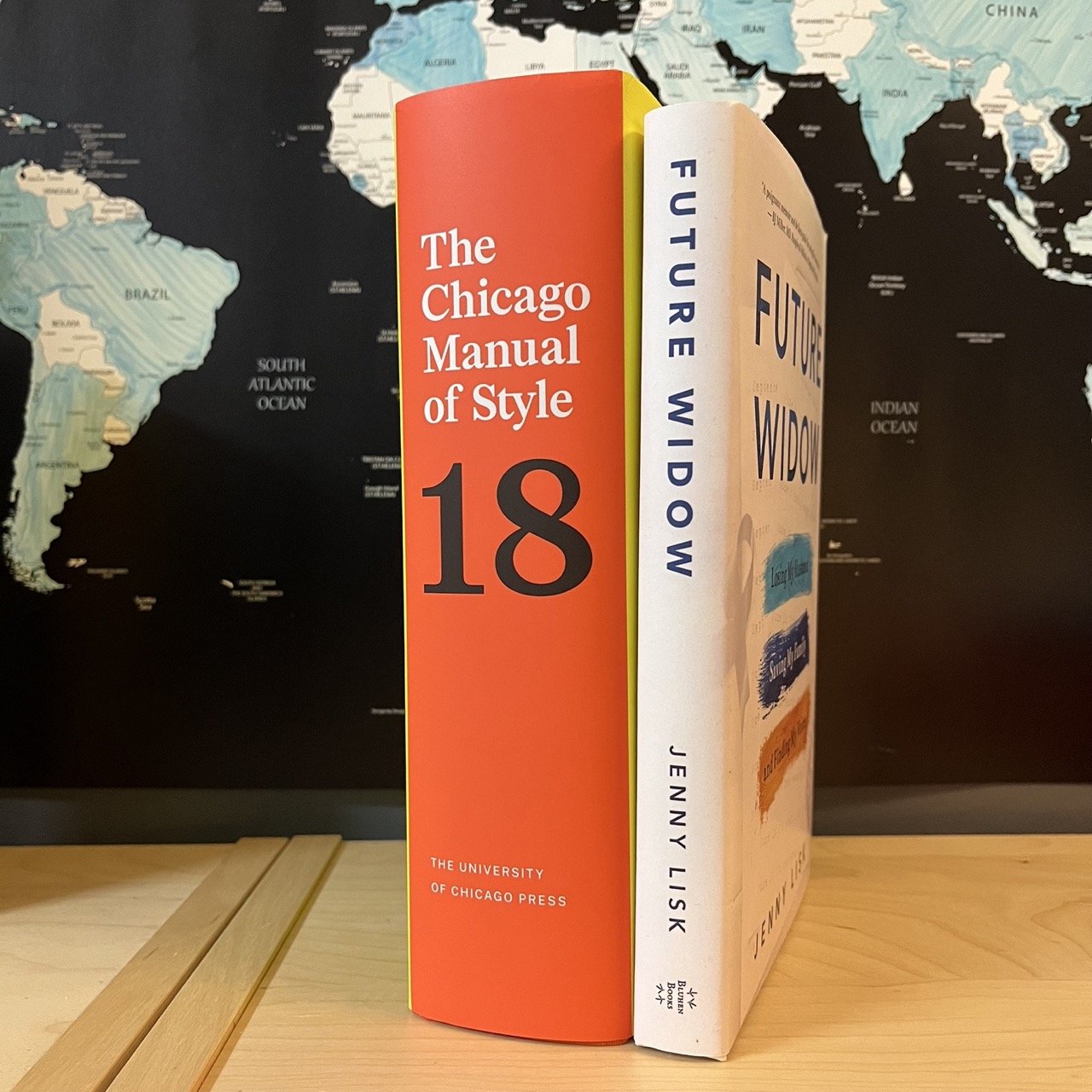Five Christmases Ago, I Bought Myself a Copy of “The Chicago Manual of Style”
Since becoming widowed nearly nine years ago, I’ve embraced the notion that I’m now responsible for buying myself holiday gifts.
Yes, I have family who exchange presents, and who remind or assist the kids with choosing something for me. But when it comes to Christmas morning, if I’m to have packages to open under the tree, it’s mostly up to me.
It’s kind of freeing, actually. I often choose things for myself based on whatever I’m thinking about at the time. Whatever excites me. Whatever I’m looking forward to.
And so five years ago, I decided on December 23 that what I really needed for the coming year was my very own copy of the two-and-a-half-inches-thick book, The Chicago Manual of Style. Amazon had it in my hands in time for it to be wrapped and under the tree on Christmas morning.
I’d spent the prior August drafting my memoir, which is now the book Future Widow. I had been frustrated with various attempts to get that first version of the manuscript down on paper.
Write an hour every morning, some say.
Block every Saturday morning, say others.
None of those worked for me, so after much frustration, I cleared my calendar for the month of August (2019) and committed to writing 1,000 words a day. I kept myself accountable by posting on social media about my progress.
Now here I was a few months later, first draft in hand, and unclear what my next steps should be. I knew I’d need a professional editor — but I also knew that I wanted to make the manuscript the best it could be before I handed it over. I knew that The Chicago Manual of Style was the definitive style guide for books published in North America, so I figured it couldn’t hurt to have it on hand.
Do I think all authors need their own copy?
Not necessarily.
If you take away one piece of advice from this article, it should be this: Ensure that your editor is editing your book according to the conventions of The Chicago Manual of Style.
Not AP Style, which is used for journalism. Not Strunk and White’s Elements of Style, which is favored by English teachers.
Chicago Style.
Make sure your book layout person is using Chicago Style, too, when making decisions on front and back matter, running heads, pagination, and the rest of the important details that make a book look like a book.
If you want to dive deep on the nuances of m-dashes, ellipses, and Oxford Commas — all rabbit holes I’ve gone deep into — then pick up your own copy.
Otherwise, rest easy knowing that professionals who use Chicago as their guide are working according to industry norms and conventions. They’ll ensure your book ends up right.
Over the years, I’ve bought myself some interesting Christmas gifts. One year it was the book Giftology, by John Ruhlin. Most years, I get myself a new pair of German boiled-wool slippers. And the year I published my first book, which came out in early January 2021, I celebrated with a pair of (tiny!) diamond earrings from Tiffany’s under the tree.
And this year? Well, I’m working up a visual representation of my approach for strategically building an author platform. I’m not so sure the visuals I’m playing around with quite do it justice, so my friend suggested that I pick up a copy of The Back of the Napkin: Solving Problems and Selling Ideas with Pictures, by Dan Roam.
It sounds intriguing — so I’ll be finding it under my tree when I wake up tomorrow. I’m looking forward to diving in.
I wish you the best with your writing, editing, and publishing endeavors in 2025.
Next Steps
DOWNLOAD: Top 8 Print Book Layout Mistakes
READ: Can My Journalist Friend or English Teacher Neighbor Edit My Book?
Does someone you know need this blog?
Here is the sign-up page.

